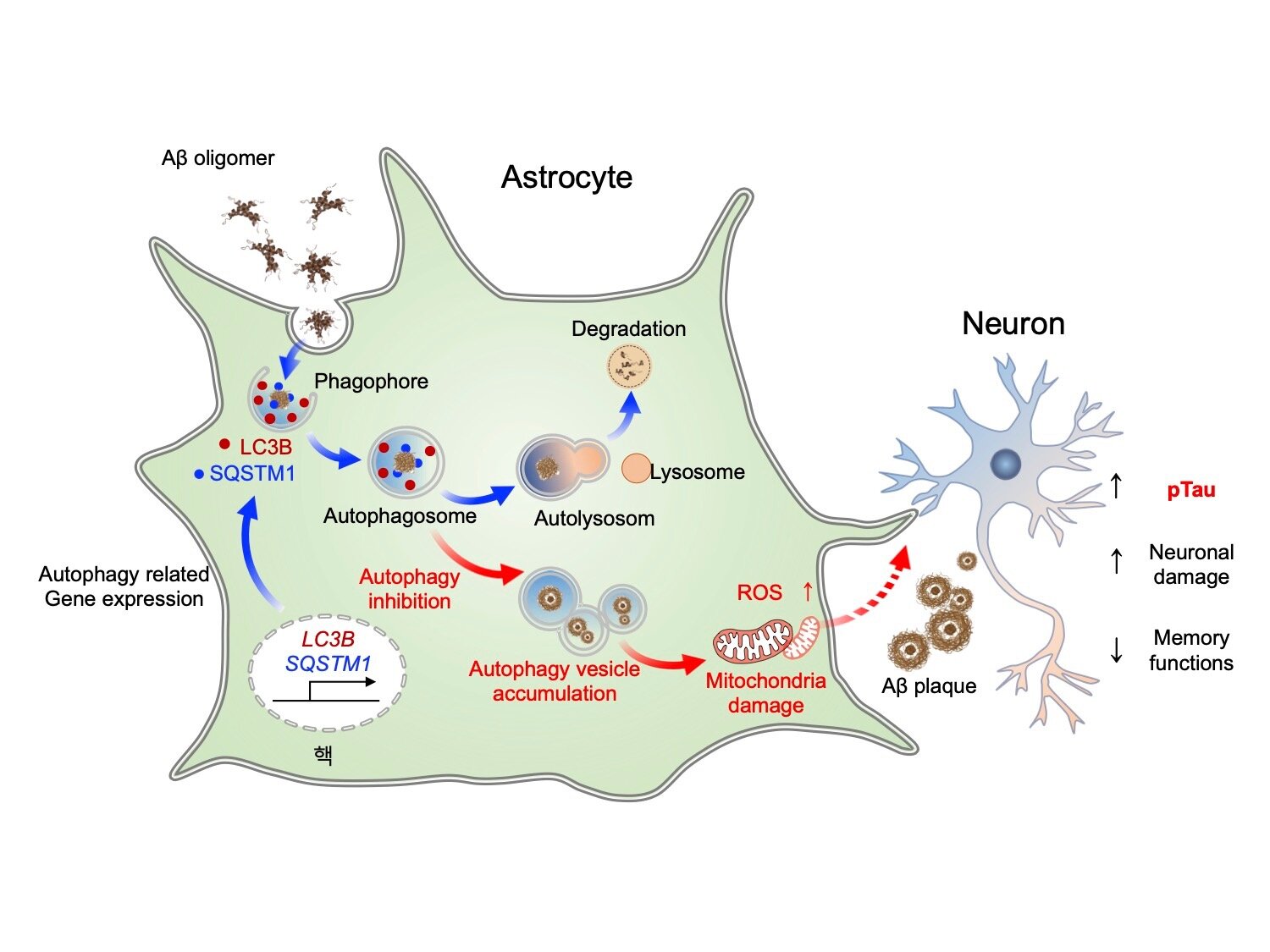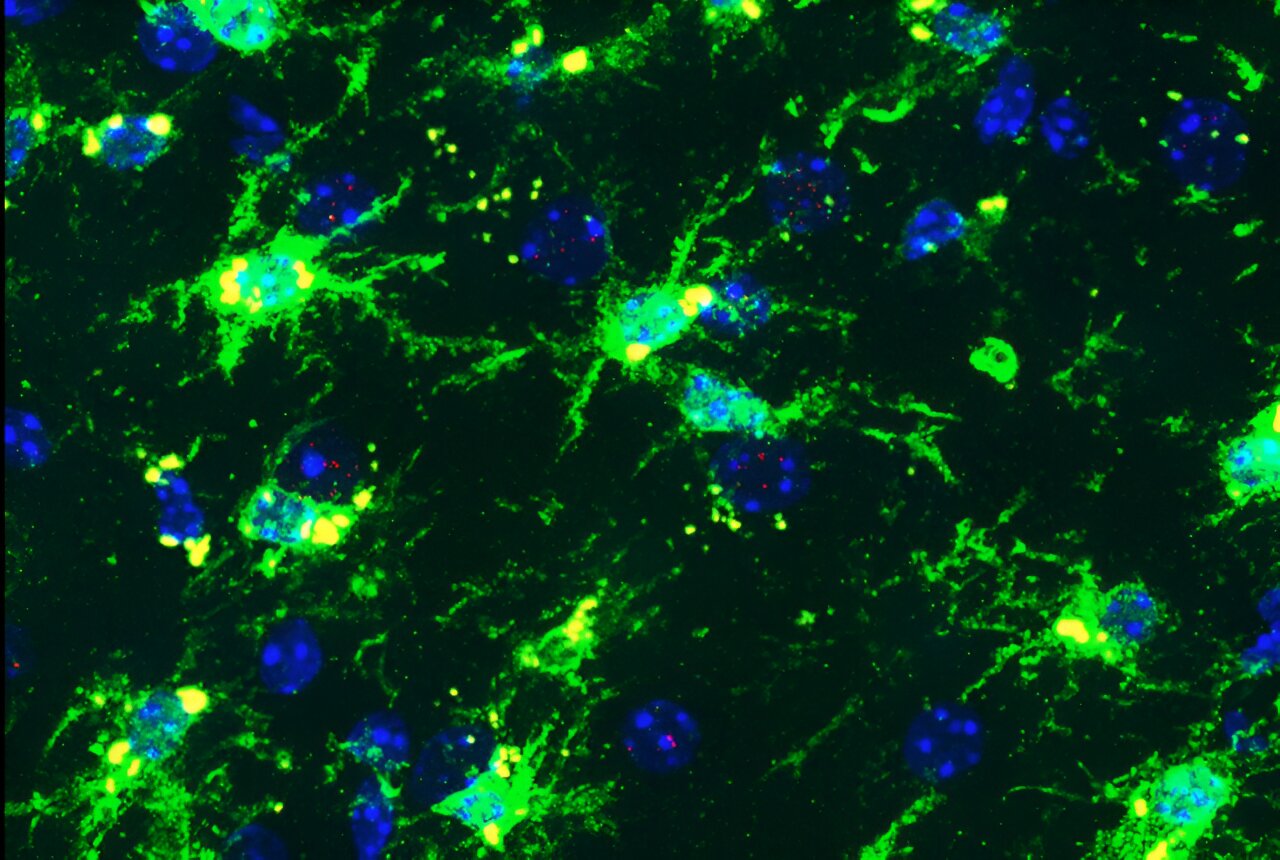
A research team has uncovered a new mechanism involving astrocytes for treating Alzheimer’s disease (AD) and proposed a novel therapeutic target.
In their study, the researchers revealed that an autophagy pathway in astrocytes (non-neuronal cells in the brain) removes amyloid-beta (Aβ) oligomers, the toxic proteins found in the brains of AD patients, and recovers memory and cognitive functions. The paper is published in the journal Molecular Neurodegeneration. The researchers were led by Dr. Hoon Ryu from the Korea Institute of Science and Technology (KIST) Brain Disease Research Group, in collaboration with Director Justin C. Lee of the Institute for Basic Science and Professor Junghee Lee from Boston University Chobanian & Avedisian School of Medicine.
AD, a representative form of senile dementia, occurs when toxic proteins like Aβ, abnormally aggregate and accumulate in the brain, leading to inflammation and damage to neurons, causing the neurodegenerative disorders. Although the scientific community has long focused on the role of astrocytes in removing toxic proteins around neurons, the exact mechanism remains unclear.
Autophagy is a process by which cells break down and recycle their own components to maintain homeostasis. The research team scrutinized the autophagy process in astrocytes and discovered that when toxic protein buildup or inflammation occurs in the brains of AD patients, astrocytes respond by inducing genes that regulate autophagy.
By delivering these autophagy-associated genes specifically into astrocytes in AD mouse models, the researchers observed the recovery of damaged neurons.
-

(A) Increased expression of autophagy factors (LC3B, observed as blue dots) in astrocytes (GFAP) in the brain tissues of AD patients. (B) Increases in reactive astrocytes and autophagy gene expression in the brain tissues of AD patients. (C) Correlation between increased reactive astrocytes and autophagy gene expression was confirmed in the brain tissues of AD patients. Credit: Korea Institute of Science and Technology
-

Inhibition of autophagy, specifically in astrocytes, prevents the removal of Aβ via autophagic vesicles, which could worsen dementia pathology. Credit: Korea Institute of Science and Technology
This study demonstrated that astrocytic autophagy reduces Aβ aggregates (protein clumps) and improves memory and cognitive functions. Notably, when autophagy-associated genes were expressed in astrocytes of the hippocampus, a brain region responsible for memory, the neuropathological symptoms were decreased.
Most significantly, this study showed that the autophagy plasticity of astrocytes is involved in eliminating Aβ oligomers, a major cause of AD pathology, thus presenting a new potential therapeutic avenue for treating AD.
This research is particularly meaningful as it shifts away from the traditional neuron-centered approach in AD drug development, instead identifying astrocytes (non-neuronal cells) as a novel target for therapy. The research team plans to further explore drug developments that can enhance the autophagic function of astrocytes to prevent or alleviate dementia symptoms, and to conduct preclinical studies in the near future.
Dr. Ryu and Dr. Suhyun Kim (the first author) commented, “Our findings show that astrocytic autophagy restores neuronal damage and cognitive functions in the dementia brain. We hope this study will advance our understanding of cellular mechanisms related to autophagy and contribute to future research on waste removal by astrocytes and health maintenance of the brain.”
More information:
Suhyun Kim et al, Astrocytic autophagy plasticity modulates Aβ clearance and cognitive function in Alzheimer’s disease, Molecular Neurodegeneration (2024). DOI: 10.1186/s13024-024-00740-w
Citation:
Autophagy pathway in astrocytes raises possibility of Alzheimer’s disease treatment (2024, September 30)
retrieved 6 October 2024
from https://medicalxpress.com/news/2024-09-autophagy-pathway-astrocytes-possibility-alzheimer.html
This document is subject to copyright. Apart from any fair dealing for the purpose of private study or research, no
part may be reproduced without the written permission. The content is provided for information purposes only.


